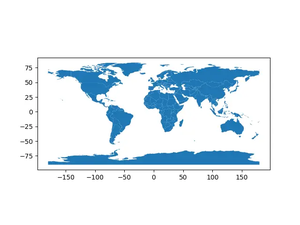The Problem
While working with Pandas, a popular library in Python for data analysis, you might encounter warnings that could turn into errors or exceptions in the future releases of the library. One such warning is the FutureWarning about the use of ‘M’ being deprecated in favor of ‘ME’ for certain operations, particularly when dealing with time frequencies or time-based grouping operations.
This warning is rooted in the drive to bring clarity and uniformity to time frequency strings across the board. ‘M’ historically stands for month-end frequency, but it can be ambiguous or confusing, particularly to new users. Therefore, ‘ME’ which unambiguously stands for month-end frequency, is recommended going forward.
Solution 1: Update the Time Frequency String
The most straightforward solution is to replace all instances of ‘M’ with ‘ME’ in your code where time frequencies are specified. This ensures your code is compliant with future versions of Pandas and enhances its readability and clarity.
- Step 1: Identify all occurrences where ‘M’ is used for specifying time frequencies.
- Step 2: Replace ‘M’ with ‘ME’ in these occurrences.
# Before
pd.date_range(start='2022-01-01', end='2022-12-31', freq='M')
# After
pd.date_range(start='2022-01-01', end='2022-12-31', freq='ME')
Notes: This is the simplest solution but requires manual updating of your code. It ensures future compatibility but may be tedious if you have used ‘M’ extensively across your project.
Solution 2: Defining a Custom Frequency Alias
For those who find ‘ME’ less intuitive or in cases where backward compatibility with older versions of Pandas is necessary, defining a custom frequency alias can be an alternative approach.
- Step 1: Import the
pd.offsetsmodule. - Step 2: Define a new alias that maps to the desired frequency.
from pandas.tseries import offsets
# Defining a custom alias
offsets.register('M', offsets.MonthEnd())
# Using custom alias
pd.date_range(start='2022-01-01', end='2022-12-31', freq='M')
Notes: This approach maintains the legacy code but could potentially confuse new collaborators or lead to future compatibility issues. It’s beneficial for a smoother transition phase but is more of a temporary fix.
Solution 3: Use Explicit End-Of-Month Functionality
Instead of relying on aliases, explicitly using functions that convey end-of-month semantics can enhance the clarity of your code, making it more readable and robust against deprecation issues. Just replace frequency strings with calls to end-of-month functions or methods.
# Before
pd.date_range(start='2022-01-01', end='2022-12-31', freq='M')
# After
pd.date_range(start='2022-01-01', end='2022-12-31').at_month_end()
Notes: This method enhances code clarity and avoids the risk associated with future deprecations. However, it may require rewriting sections of your code and understanding additional Pandas functionality. This approach emphasizes using more explicit and descriptive methods, reinforcing best practices in coding.
